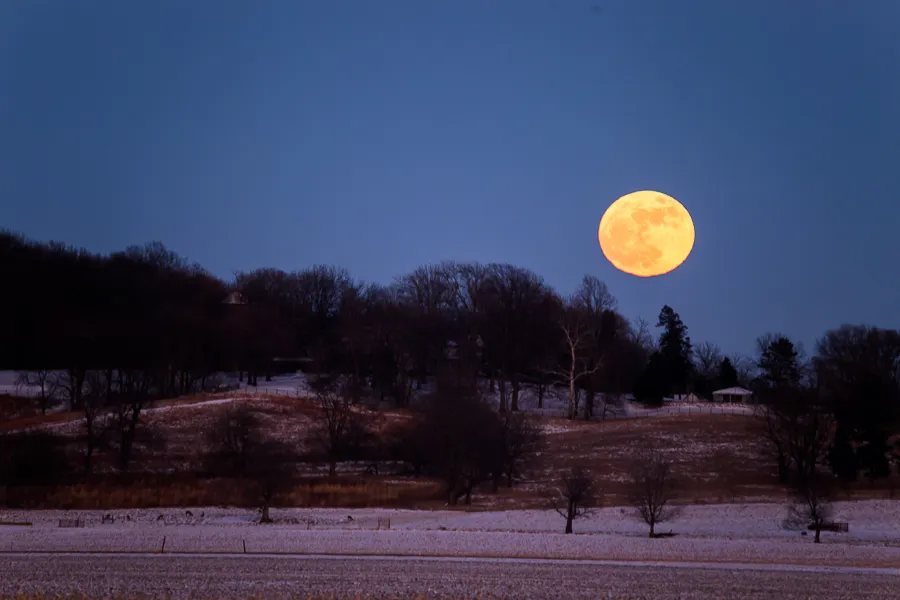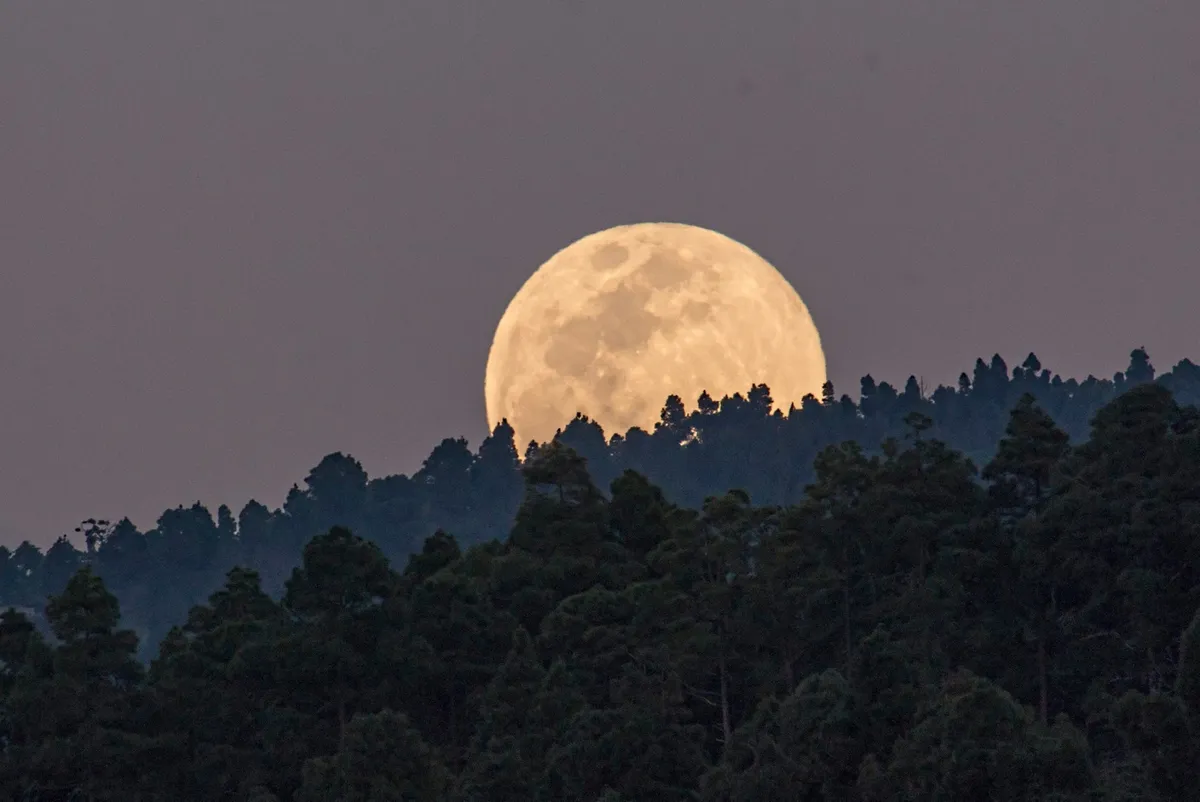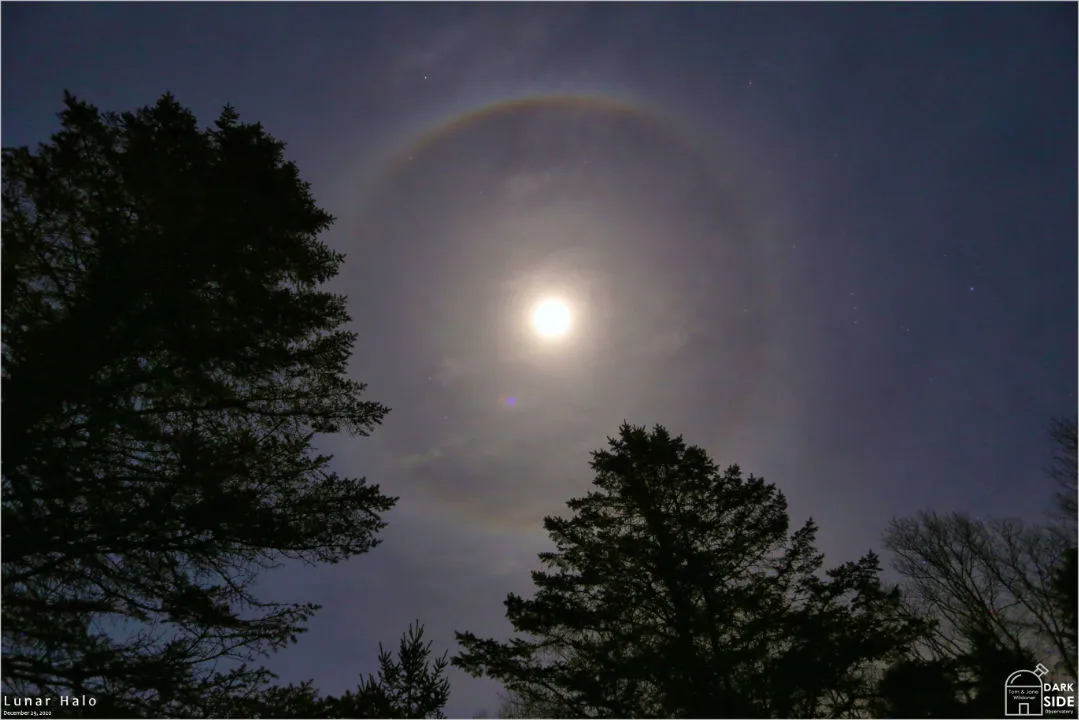The third full Moon of 2025 will be visible tonight from 18:40 UTC on 14 March, the evening following the March 14, 2025 lunar eclipse.
A bright full Moon is one of the night sky's greatest naked-eye sights, and is a brilliant target to get kids and newcomers interested in the night sky.
Sign up to the BBC Sky at Night Magazine e-newsletter for lunar times and phases delivered to your email inbox every week. Download and print out our lunar phases 2025 poster for phases and timings throughout the year.

Before the advent of electric lighting, a bright full Moon like the Worm Moon must have been a great comfort to travellers who had to undertake journeys under the cloak of darkness.
Many astronomers avoid a full Moon, however, as it washes out everything else in the night sky, including meteor showers and deep-sky objects like galaxies, nebulae and star clusters.
Nevertheless, it's a beautiful sight to behold and there's still a lot you can enjoy if you're stepping outside to observe the Worm Moon.

Why it's called a Worm Moon
Every full Moon of the year has a nickname, and even though a full Moon might have a name like 'Strawberry Moon' or 'Wolf Moon', this doesn't actually reflect any change in appearance from one full Moon to the next.
So why is a Worm Moon called a Worm Moon?
Many full Moons have nicknames that reference key moments in nature that are occurring when that Moon is in the sky.
A Buck Moon, for example, is so-called because it's the full Moon in July, and July is when male deer (bucks) begin to grow their antlers back.
The term 'Worm Moon' is thought to be a result of the March full Moon heralding the beginning of warmer spring weather, as earthworms begin to appear and nature springs to life following a cold, dark winter.
The emergence of earthworms in warmer weather in turn provides food for newborn birds and other animals awaking from hibernation.
Nature feels alive again, and the humble worm is a great signifier of the activity that lies ahead as spring turns to summer.
Perhaps the term 'Worm Moon' for the full Moon in March is more apt than it initially appears!
Observing the Worm Moon

From the UK, the Worm Moon will rise in the east and will be visible from about 18:40 UTC on 14 March 2025.
It will be located in the constellation Virgo and will be just below the famous Bowl of Virgo asterism.
Read our guide on what to see during a full Moon.
Here are some ways you can enjoy the Worm Moon in 2025.
The Moon illusion

The Moon illusion is the name given to the fact that a rising Moon appears enormous when it's low down and close to the horizon.
No-one has ever been able to confirm why this happens, but it's thought to be a result of the bright full Moon dwarfing foreground objects like buildings and trees, making the Moon simply appear larger.
Hold your arm out at length and cover the Moon with your thumb. You'll see the Moon isn't actually any bigger than it would be if it were higher in the sky.
Lunar halo

Sometimes you might see a bright halo around the Moon during a full Moon.
This happens because bright moonlight is shining through surrounding clouds, causing the appearance of haloes and other atmospheric phenomena.
If you're observing the Worm Moon, see if you can observe any tricks of light caused by the bright lunar glare.
Observe, sketch, photograph and marvel

Don't avoid a full Moon because conventional astronomical wisdom tells you to!
It's said the best time to observe the Moon is during crescent and gibbous phases, when the terminator - the line dividing the lit and unlit portions of the Earth-facing side of the Moon - is present, because shadows accentuate craters and other surface features.
But you can still head out and look up at the bright full Moon and get to know its various features.
Binoculars will enable you to explore the lunar surface, including its craters and the lunar maria - or seas.
You could also try locating the Apollo landing sites on the Moon.
And have a go at sketching the lunar surface, then compare your sketchings with family and friends. Find out more in our guide on how to sketch the Moon.
Or you could photograph the Moon. If you have a smartphone tripod and if your phone has a 'pro' photography mode, you can change the ISO, white balance and exposure time to capture an image of the Moon.
Read our guide on how to photograph the Moon with a smartphone for more advice.
And if you do capture an image of the Worm Moon, don't forget to send us your images.
